The CTA's 2200 El cars end their service today. One CTA picture captures their legacy:
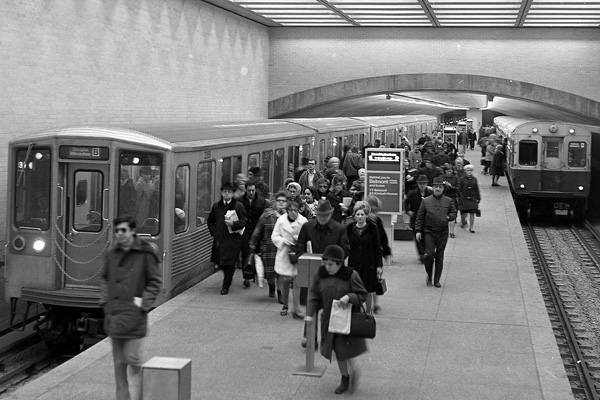
Photo: CTA
Arriving at the two-month-old Belmont station is the Skidmore, Owings and Merrill's just-introduced 2200 car. Leaving the station is the 6000-series car, built in 1950. The manner in which the 2200s echo the design of the station is not a coincidence; the Belmont stop was designed by the same SOM team, led by Myron Goldsmith. The architect's Red Line stops were also designed to pair with the new cars, arched canopies that still look contemporary after renovations have brought them back to life. The canopies at the forthcoming Wilson Station renovation look back to Goldsmith's work.
A couple years before SOM's International Style cars debuted, New York City hired its own star firm to modernize the look of its subway cars, the legendary firm of Raymond Loewy, designer of the spectacular Pennsylvania Railroad S1 locomotive that ran out of Chicago for years.
Loewy's design was the menacingly futuristic R40. The slanted front was meant to look graceful, adapting Loewy's Deco training for the style of the time, but it was also a massive safety hazard for crossing between cars. The retrofitted front turned it into something out of The Warriors.
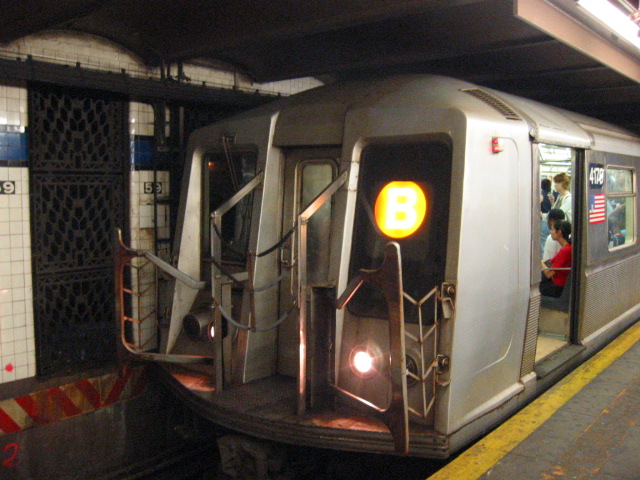
Photo: Wikimedia Commons
As Mies van der Rohe protege Goldsmith was about to take on the CTA's redesign, Washington D.C. enlisted the brilliant Chicago architect Harry Weese to build its new Metro stations. Weese was a modernist, but not in the style of Goldsmith and SOM:
At his peak in the 1960s and 1970s, Weese represented Chicago’s most sustained and successful alternative to what was then the overwhelming dominance of Mies van der Rohe and the International style. “When I joined Harry’s office [in 1961], it was like giving up the Church of England and becoming a Christian Scientist,” says Jack Hartray, who had previously worked as a designer at Skidmore, Owings & Merrill, then and now the foremost proponent of Miesian modernism in the city. “Harry was a [modernist] architect who was doing very interesting buildings, but they weren’t like anyone else’s.”
The cathedral Weese gave D.C. was so spectacular it adorns the cover of Robert Breugmann's overview of Weese's work.
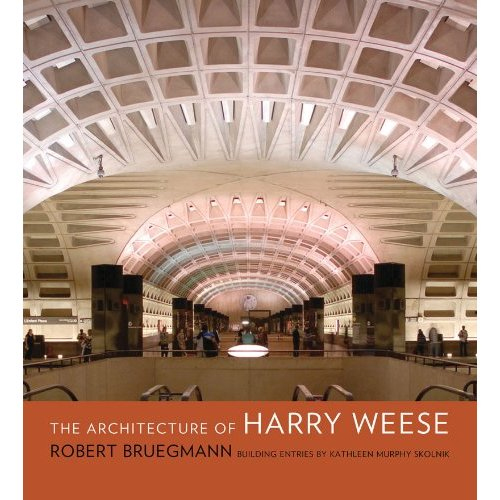
The CTA continues to turn to architects for its stations, like the lauded new Morgan stop from locals Ross Barney Architects:
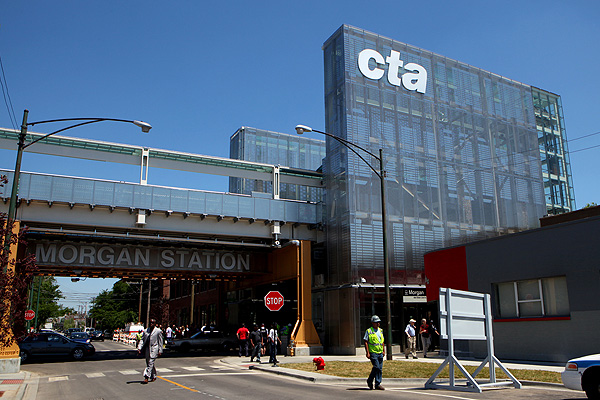
Photo: Chuck Berman/Chicago Tribune
But not, so much, for the trains and buses that use the stations. Which is a shame. London recently drafted designer Thomas Heatherwick to redesign their double-decker buses, among the biggest shoes to fill in all transit design.
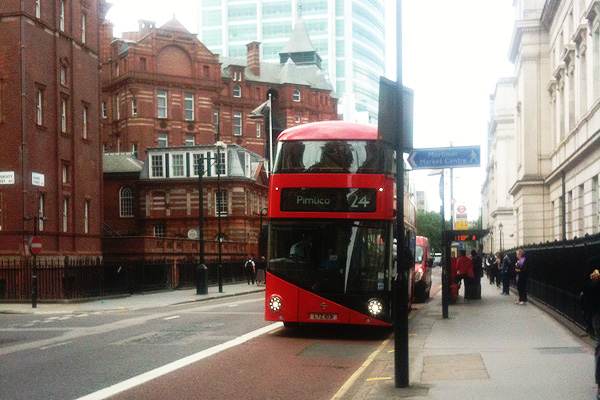
Photo: Jodiepedia/CC by 2.0
Here's Heatherwick describing the design process:
Earlier this year, the CTA issued an Invitation for Bids for the 7000 series; all that's been determined is the seating arrangement. When they debut, it will be almost 50 years since Goldsmith modernized the CTA's look, a massive change from the series designed just a few years before, and all the ones since have hewed to his International Style principles. (Yes, people hate the accordion doors; design has come much more conscious of usability since the '60s.) Since then Chicago has been through a revolution in its architecture; it remains to be seen if its arteries will follow.



